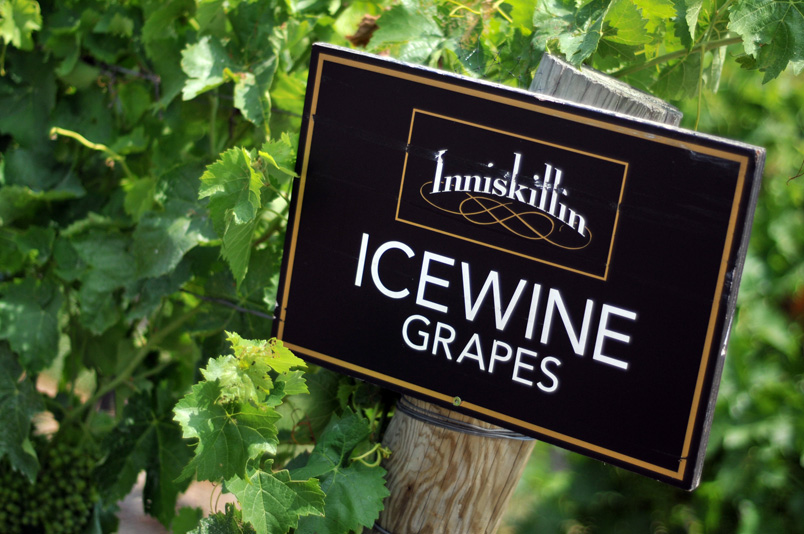
After driving along the vine-lined roads, through the Niagara-on-the-lake country-side we pulled into a long drive way after spotting a flag flapping in the warm afternoon breeze. The flag was marked “Inniskillin”; we had arrived at the Inniskillin Winery.
The parking lot itself was set amongst the vines; there was a row of spaces, a few rows of vines, then another row of spaces, and so on. Having arrived only moments before, we were happily surprised to already be engulfed within the winery setting. We set off toward the entrance, excited to see what else Innsikillin had in store.
We were greeted by a friendly staff member, who then introduced us to our tour guide, Donald. Donald shared his name with one of the founders of the Inniskillin Winery, Donald Ziraldo, partner of Karl Kaiser.
Our Donald proceeded to lead us over to the show room, explaining that it had started as an old horse barn and was then revamped into its current state with the help of designer Frank Lloyd Wright.
We entered the building for our first tasting, trying a pinot grigio and a rosé.
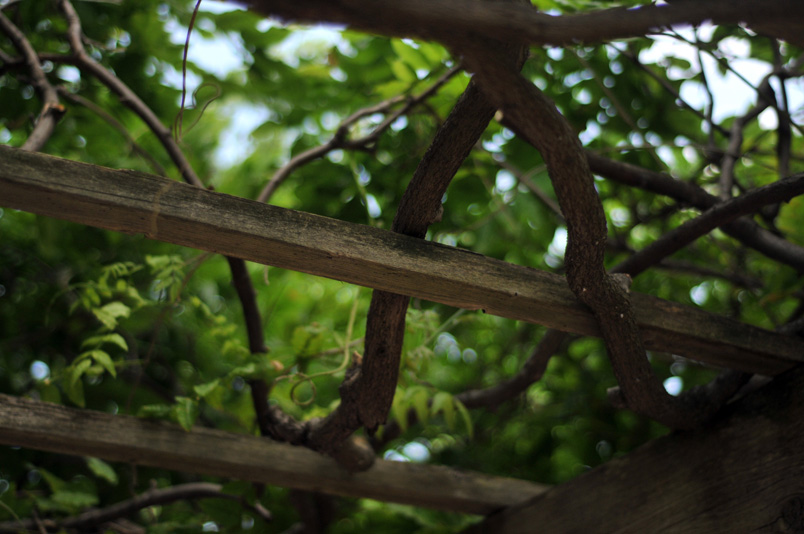
Next, Donald lead us outside to a vine wrapped lattice-structure and pointed to a large rising in the distance. He explained that the rising was actually the Niagara escarpment.
Only 10,000 years earlier (this is very young in geological terms) the escarpment had rested exactly where we were currently standing. Niagara Falls had efficiently worked away at the Earth, millennia after millennia, and effectively shifted its location to present day Niagara Falls (city).
Donald then explained that the escarpment was the reason that Niagara-on-the-lake has the perfect climate for growing grapes. Breezes coming in from Lake Ontario circulate by rolling over the plains, and then curling back over when they hit the escarpment, creating their very own microclimate.
Generally mild temperatures remain nearly constant in the valley, year-round, making it the perfect environment for wine-country. In the few months of the year that do receive colder than regular temperatures, it is a great opportunity for ice wine.

Being a geography major, myself, I was very interested to learn all of the physical aspects of the winery. Aside from the air currents and escarpment erosion, we also learned about the soil.
The soil on the farm is a loam, made up of a crumbly mixture of clay, sand and silt, and dolomitic limestone. Loam soil is high in acidity, which produces a different taste to the finished wine.
In order to compliment the flavour on the tongue, it is necessary to produce a glass that holds a certain shape. Inniskillin has produced its very own ice wine glass, for this very reason.
With wide out-crops on the side, the sides of the tongue receive contact with the acidic flavours; with a thinner opening and narrow bottom, the tip and back of the tongue receive less of the (sometimes overly) sweet flavour that ice wine is known for.
Drinking this ice wine with a regular wine glass is enough to make your (sweet) tooth ache!
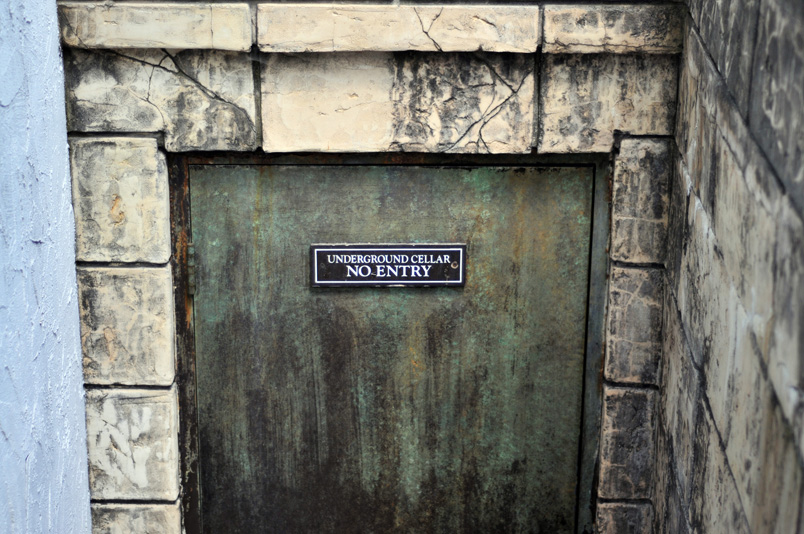
After a brief explanation of the machinery behind the wine, we headed underground. Welcoming the cold air on the hot summer day, we descended into the dark cellar. We viewed a video about winery operation, and then headed in among the barrels.
There were old bottles and new bottles, dusty bottles and shiny bottles. There were bottles with fancy shapes and designs, and even bottles larger than my head. Barrels lined the walls, and iron bars protected them from being moved.
The room held so much history that it would be easy to spend hours down there, browsing the bottles, and reading over all of the information plaques that lined the cases.
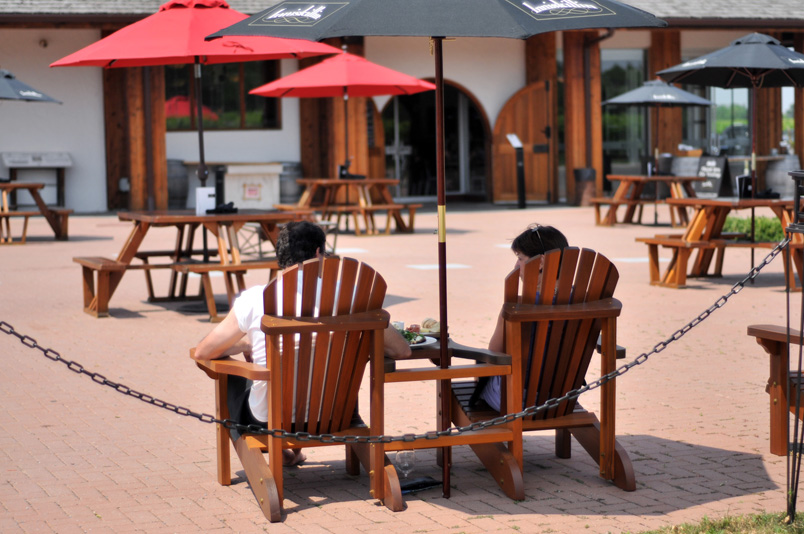
Exiting the cellar, we were lead between two buildings, into a back entryway. We had entered Founder’s Hall; the main serving area, where visitors come to enjoy small plates and drink a little wine (with air-conditioning!).
To the side of the main room, was a smaller glass-walled roomed, called the Riedel Room.
Here, we were seated at a large oak table that was arranged with glasses and place settings. We enjoyed a delicious lunch of Flatbread Pizza, with Pingue Cacciatore, Chevre, Honey Mushroom, White Truffle Oil and Arugula.
As if the lunch wasn’t already amazing enough, we were then served the Inniskillin 2006 Oak Aged Vidal, Apricot Ice Wine. We were floored. I can personally say, without any word of a lie—this was the best wine I have ever tasted. It had a rich, fruity taste, and the perfect amount of sweetness. Having to drive home later, I was forced to stop myself from sipping any further. However, stopping was the last thing that I wanted to do.
Had it been under the proper circumstances, I would have easily been able to finish the entire bottle alone.
Taking one last look back at the winery’s Piazza, I thought to myself, “I am definitely going to come back soon, and buy myself a bottle of that Apricot Vidal.”

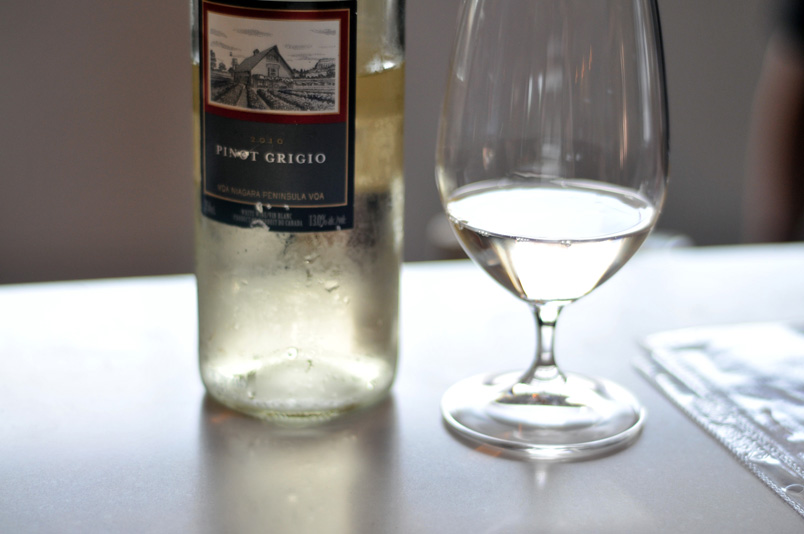
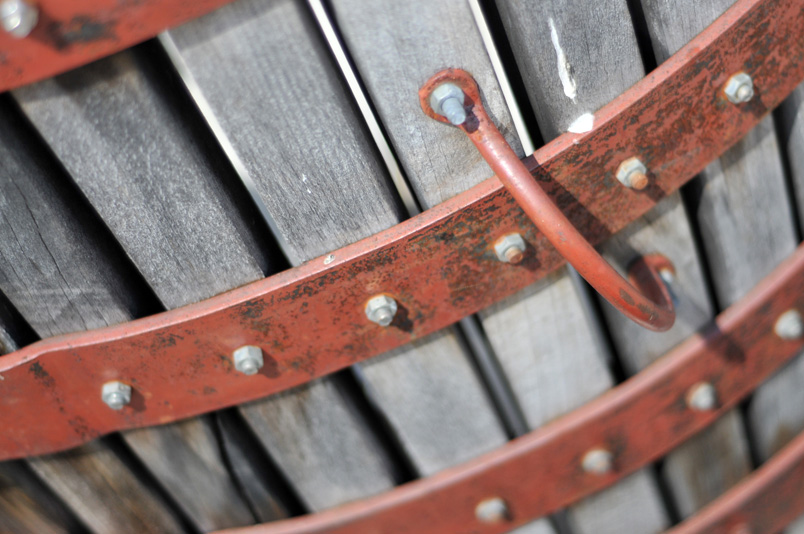

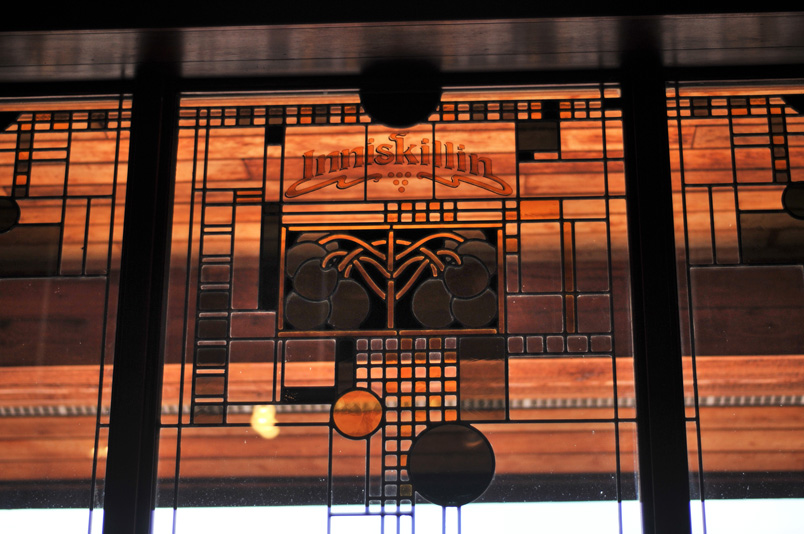



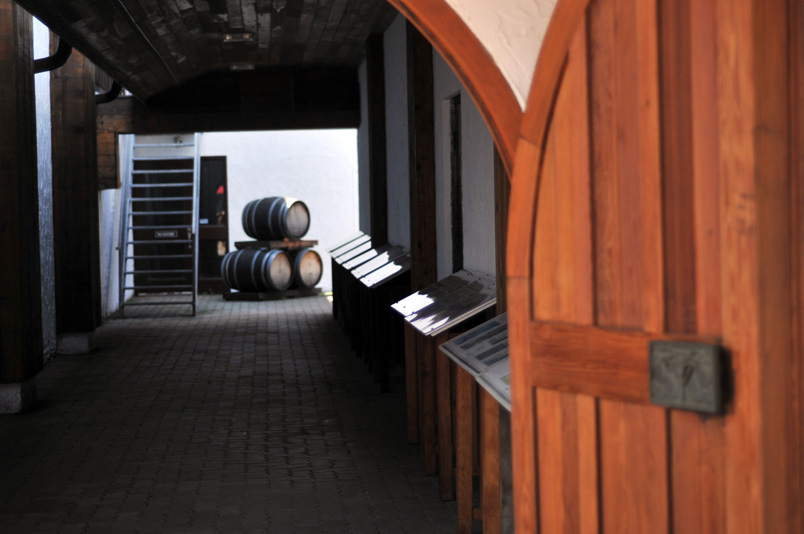
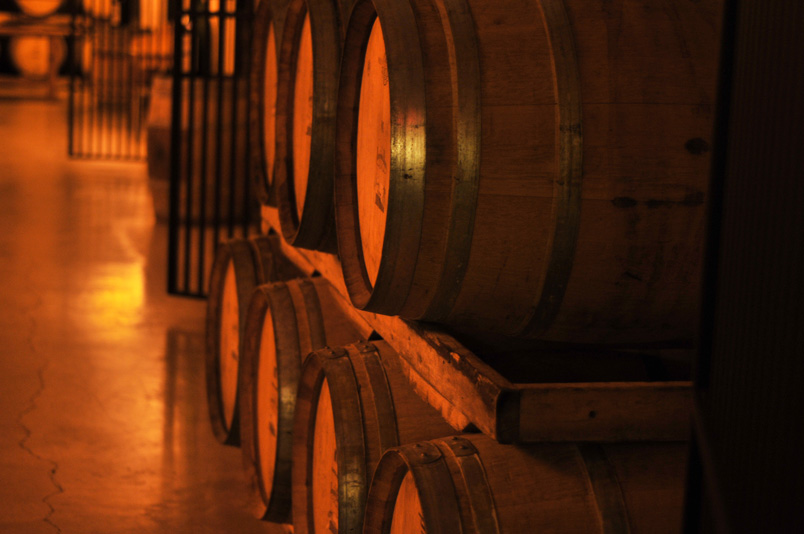
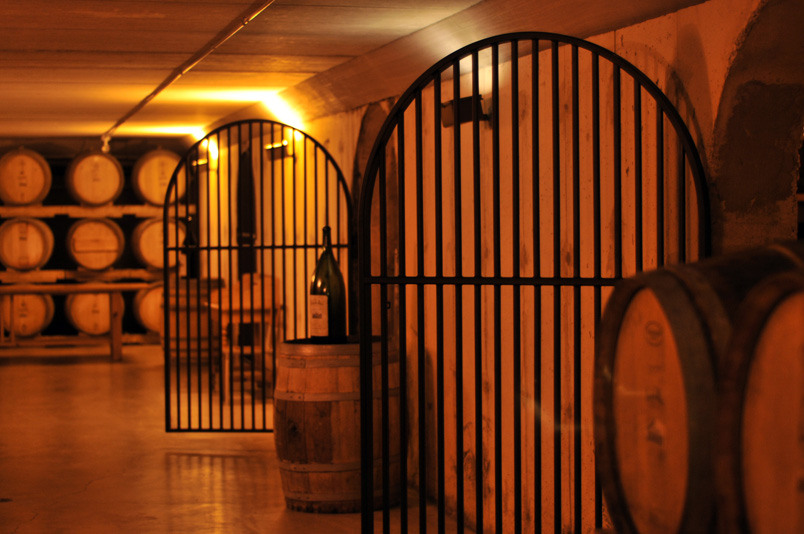

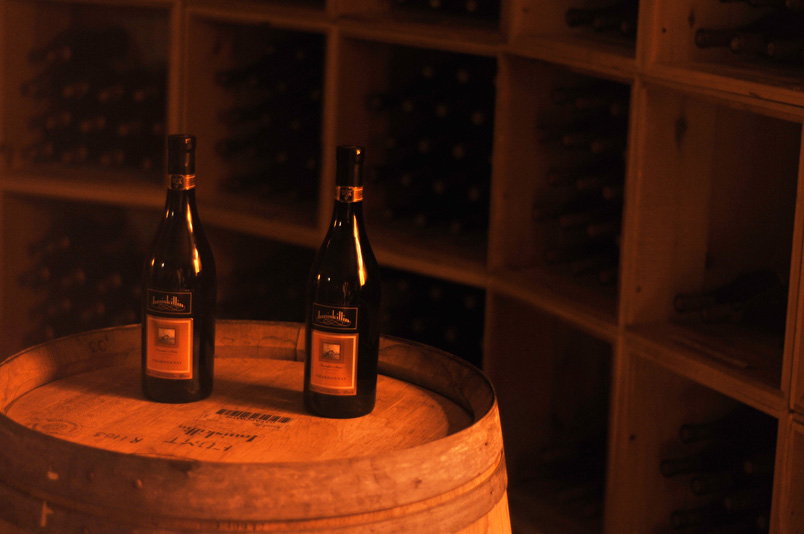


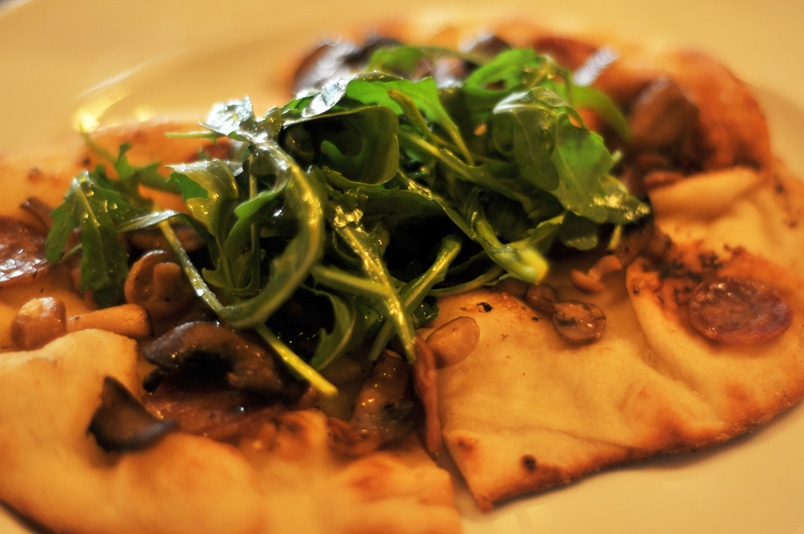
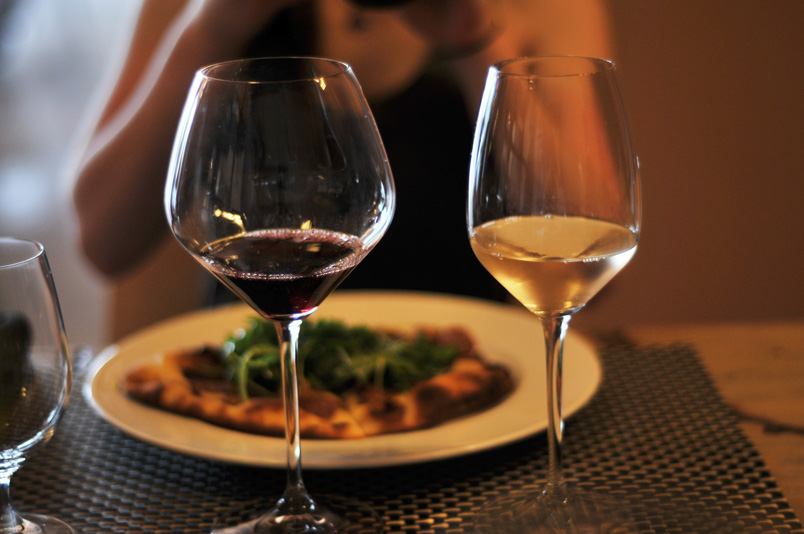

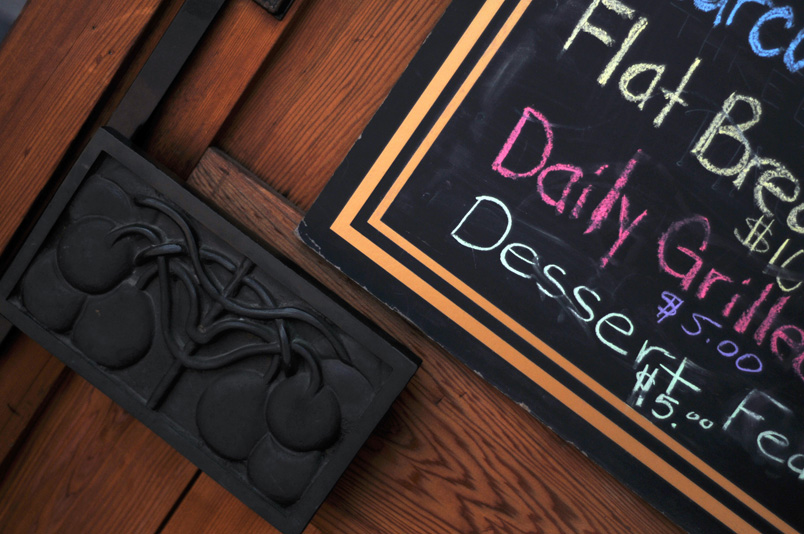
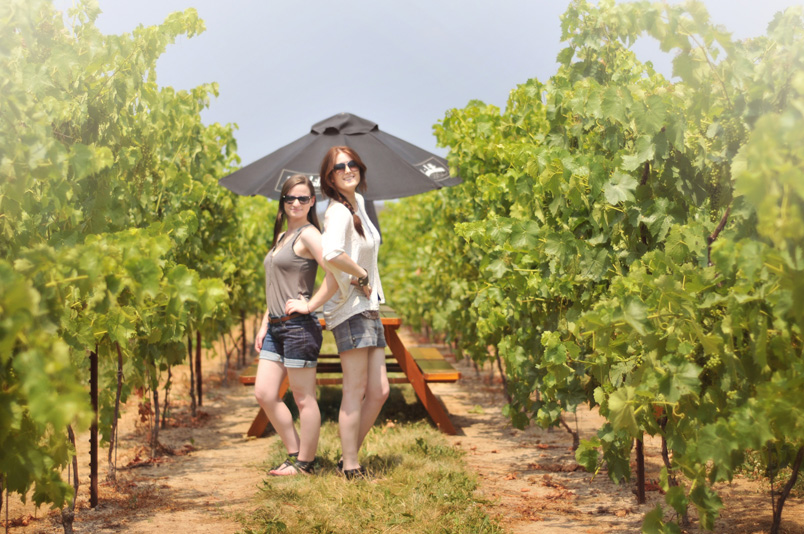
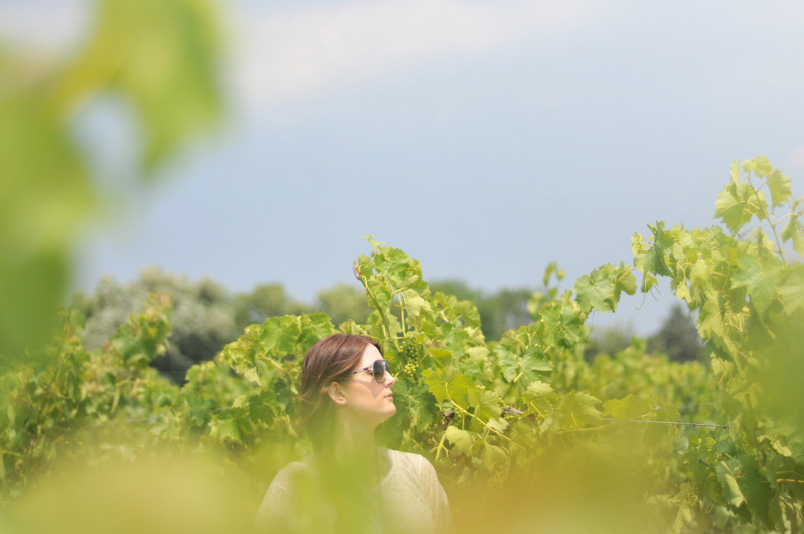
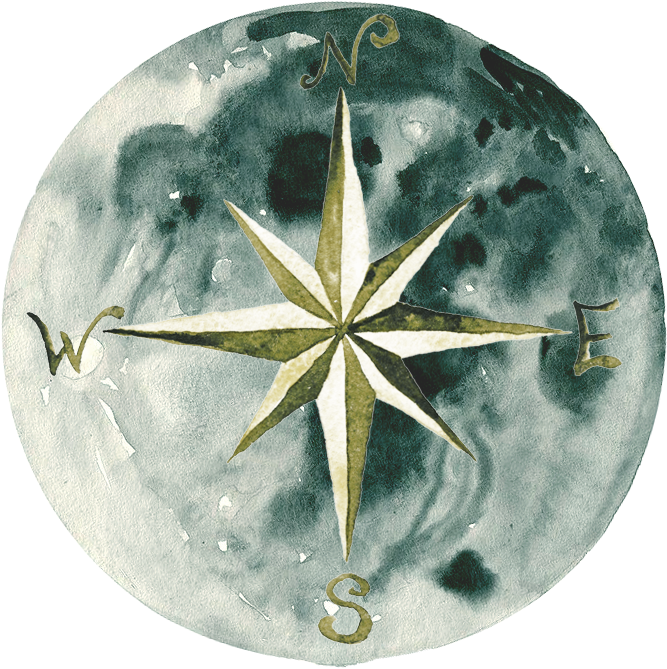
This article reminds me of the time I went for a wine tasting tour in Cafayate, Argentina. I was with a friend at the time and we both marvelled at how great the wine tasted; meanwhile, another person we met nearly spat it out saying it tasted like vinegar. I honestly don’t know the difference between a good or crappy bottle 😛 Anyhow, the photos really add a nice touch to this article. I like how you’ve captured some up close detail shots.
hehe, yeah; we warned the guide that we were definitely not wine experts. But, we both really loved the wine that we did try 😀
& Thanks!
Could be my favourite vineyard in Niagara, nice shots.